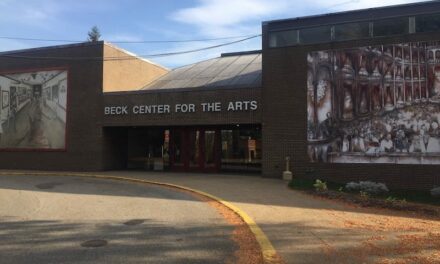The New York City Council announced that they have passed legislation requiring that public assembly areas constructed or renovated using city dollars must install “Hearing Loop” technology for those with hearing loss.
A hearing loop, also known as an induction loop, is a wire surrounding or crossing a room that is connected to a sound system. The loop transmits sound electromagnetically to telecoils in hearing aids and cochlear implants, eliminating background noise and providing a dramatically clearer signal to the wearer.
Intro 882-A, sponsored by Council Member Helen Rosenthal of Manhattan, requires the installation of Hearing Loop systems in city-funded capital projects with one or more public assembly areas. The legislation applies to both new construction and renovation projects with an estimated construction cost of $950,000 or more. Under the city’s current capital plans, the legislation would require that close to 300 projects be looped across New York City going forward.
By requiring their installation, this legislation will enable countless New Yorkers to fully participate in public hearings and meetings. According to the Hearing Loss Association of America, about 20 percent of Americans report some degree of hearing loss. Advocates for those with hearing loss believe that New York City is the first major municipality in the country to enact such legislation.
“With this bill, the City of New York will ensure that more and more spaces every year will be truly accessible to those hard of hearing. Hearing loop technology makes such a radical difference in the ability of so many to participate fully in public life, and I’m proud that as a city we have moved to make it not just a priority but a requirement in our public investments. I want to thank the advocates whose hard work made this possible, educating me and other policymakers on the importance of this issue and helping us reach a path toward getting this landmark legislation passed,” said Rosenthal.
“For many people with hearing loss who wear hearing aids or have cochlear implants, hearing loop technology allows them to enjoy listening in public spaces and large areas in a way they cannot otherwise experience,” said Barbara Kelley, executive director of the Hearing Loss Association of America (HLAA). “We applaud Council Member Helen Rosenthal and the New York City Council for working to make New York City a more accessible place for people with hearing loss.”
“Hearing loss shouldn’t prevent New Yorkers from being able to participate in civic affairs, and AARP supports ensuring everyone has that opportunity,” said Chris Widelo, associate state director of AARP for New York City. “AARP applauds Councilwoman Rosenthal and the City Council for passing legislation to require that public assembly areas constructed or renovated using city dollars install ‘Hearing Loop’ technology.”
“Tens of thousands of New Yorkers are impeded in their efforts to participate in city meetings or transact business with city agencies because they have measurable hearing loss,” said Katherine Bouton, president of the New York City Chapter of the Hearing Loss Association of America. “With the adoption of this bill, we look forward to the day when all who wear hearing devices can walk into city meeting halls and hear, understand, and communicate with others. Hearing loops provide superior access to most with hearing loss, just as ramps provide access for those with mobility limitations. With this bill, New York City stands as a model for other municipalities.”
Rosenthal’s bill also requires that security, information, and reception desks in any of the newly looped assembly areas be accessible to those with hearing loss via micro-loops. Directional signage for all public areas with hearing loops technology is mandated as well.
By July 2018, the Mayor’s Office will be required to maintain an on-line list of city-managed assembly areas with hearing loops, including those slated to receive them.
Sources: New York City Council






This is wonderful news! Congratulations to the City for recognizing loops as the system that doesn’t require fiddling with a ‘gadget’ in order to hear better! Your hearing aid already has the necessary telecoil (or should), or you can borrow a receiver from the venue!
Way to go NY! I am looking to bring this before my Legislators in Maryland. I hope more states step up to the plate.
Kudos to NYC for adopting policies for quality hearing access. Loops are everywhere in Europe. With an estimated 45 million Americans with measurable hearing loss, it’s time for our culture to accommodate people with this invisible disability.
Way to go New York. We are the best